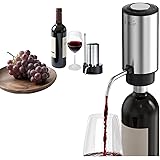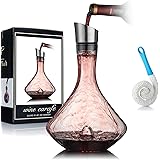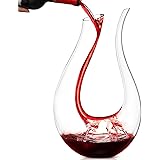Watching the video above, you learned the fundamental steps to make wine the old-fashioned way. This truly easy guide demonstrates that crafting your own delicious homemade wine at home is a rewarding and accessible endeavor. It brings a unique sense of accomplishment to transform simple fruit into a complex and flavorful beverage. Building on the video’s excellent foundation, we will now delve deeper into each stage of the winemaking process, offering additional insights, practical tips, and explanations to help you successfully make your own wine.
The Essential Toolkit for Making Homemade Wine
Beginning your journey to make wine starts with gathering the right ingredients and equipment. While the video touches on the basics, understanding the nuances of each item will greatly enhance your success. Selecting the best fruit, the right type of yeast, and reliable equipment forms the backbone of your homemade winemaking process.
Your choice of fruit is paramount. While grapes are classic, you can make delicious fruit wine from nearly any ripe fruit – think berries (strawberries, raspberries, blueberries), apples, peaches, or even plums. Always choose ripe, high-quality fruit, as its flavor will be concentrated in your finished wine. For a typical 1-gallon batch, you might need 3-5 pounds of fruit, though this varies based on fruit type and desired intensity.
Sugar is not just for sweetness; it’s the primary fuel for your yeast, converting into alcohol. White granulated sugar is common, but you can also experiment with brown sugar or honey for different flavor profiles. When it comes to yeast, specifically designed wine yeast strains are crucial. Unlike bread yeast, wine yeast can tolerate higher alcohol levels and produces cleaner flavors. Strains like Lalvin EC-1118 or Montrachet are popular for their robust fermentation capabilities and neutral flavor profiles, allowing the fruit character to shine.
Critical Winemaking Equipment Explained
The video highlights essential equipment, but let’s elaborate on their roles. A primary fermentor, often a food-grade bucket with a lid, offers ample space for the initial vigorous fermentation of your homemade wine. Its wide opening makes adding fruit and stirring easy.
The secondary fermentor, typically a glass carboy or a plastic PET carboy, is designed for the quieter, longer aging phase. Its narrow neck minimizes contact with oxygen, which is vital for preventing spoilage during maturation. An airlock, fitted into a stopper on your fermentors, allows carbon dioxide to escape while preventing airborne contaminants from entering. This simple device is a silent guardian for your fermenting batch of old-fashioned wine.
A hydrometer is an indispensable tool for every home vintner. This device measures the specific gravity of your must (unfermented juice), indicating its sugar content. By taking readings before and after fermentation, you can track progress and even estimate the final alcohol content. A reliable thermometer is also important for monitoring the fermentation temperature, which directly impacts yeast health and flavor development.
The Golden Rule: Thorough Sanitation
The video correctly emphasizes that preparation is key, with sanitation being arguably the most crucial step. All equipment—every fermentor, airlock, siphon tube, and bottle—must be impeccably clean and sanitized. Residual sugars or wild yeasts from previous batches can lead to off-flavors, stuck fermentations, or even turn your wine into vinegar. Food-grade sanitizers like Star San or PBW (Powdered Brewery Wash) are highly effective and safe. Always follow the manufacturer’s instructions for contact time and dilution to ensure maximum effectiveness without leaving harmful residues.
Mastering Primary Fermentation for Quality Wine
With your ingredients and sanitized equipment ready, the primary fermentation stage truly begins the transformation of fruit juice into homemade wine. This is where the magic of yeast takes center stage, converting fruit sugars into alcohol and carbon dioxide.
Preparing Your Fruit and Starting Fermentation
Once you crush your fruit, you expose its juices and sugars, making them available for the yeast. For softer fruits like berries, a potato masher or even clean hands work well. For harder fruits like apples, you might need a fruit press or a sturdy juicer. It’s important to remove any hard seeds or woody stems, as these can impart bitter or off-flavors to your wine.
After placing the crushed fruit (or just the juice) into your primary fermentor, it’s time to add your wine yeast. It’s often beneficial to rehydrate dry wine yeast in a small amount of warm (not hot!) water for about 15-20 minutes before pitching it into the must. This gives the yeast a strong start. Before adding yeast, measure the original specific gravity (OSG) using your hydrometer. This reading is critical for calculating your potential alcohol by volume (ABV) later on.
Maintaining Optimal Conditions for Yeast Activity
Yeast is a living organism, and its activity is highly sensitive to temperature. As the video states, maintaining a consistent temperature, ideally between 70 and 75 degrees Fahrenheit (21-24°C), is vital for optimal yeast performance. If the temperature is too low, fermentation can become sluggish or even stop altogether (a stuck fermentation). If it’s too high, the yeast can produce undesirable off-flavors, such as fusel alcohols, which contribute to a harsh taste.
During this stage, you’ll observe vigorous bubbling in your airlock, a clear sign of carbon dioxide being released as the yeast converts sugar to alcohol. Regularly monitor the specific gravity with your hydrometer. While the video mentions 5 to 10 days for primary fermentation, the most reliable indicator of completion is stable hydrometer readings over a couple of days, indicating that most of the fermentable sugars have been consumed. A typical final gravity (FG) for a dry wine might be around 0.998 to 1.005.
The Art of Racking and Aging Your Old-Fashioned Wine
After the initial burst of primary fermentation subsides, your homemade wine begins its journey of maturation. This involves several critical steps: racking and aging. These processes are essential for clarifying the wine, developing its complex flavors, and preventing spoilage.
The Racking Process Explained
The first racking, as mentioned in the video, involves carefully siphoning your wine from the primary fermentor into a clean, sanitized secondary vessel. The primary goal here is to separate the wine from the “lees”—the layer of dead yeast cells, fruit pulp, and other sediment that accumulates at the bottom of the fermentor. Leaving your wine on these lees for too long can impart off-flavors, often described as yeasty or rubbery.
When racking, minimize oxygen exposure. Use a sterile siphon and allow the wine to flow gently down the side of the secondary fermentor, rather than splashing. You may perform several rackings over a period of a few months. For instance, you might rack initially after primary fermentation (around 2-3 weeks), then again after another month, and potentially a third time if significant sediment continues to form. Each racking contributes to a clearer, more refined wine by removing suspended particles.
Developing Flavors Through Aging
Once racked into the secondary fermentor, your homemade wine enters its aging phase. This period, which can extend from a few weeks to several months, is crucial for flavor development. During aging, various chemical reactions occur, allowing the flavors to meld, soften, and become more complex. Harsh notes from fermentation will mellow, and the fruit characteristics will integrate with the alcoholic warmth.
The type of fruit and the desired complexity will influence aging duration. For example, light berry wines might be enjoyable after just 2-3 months, while a robust apple wine or a traditional grape wine could benefit from 6-12 months or even longer. Throughout this period, keep the secondary fermentor completely full to the neck to minimize the headspace and thus, oxygen exposure, which is wine’s enemy during aging. If you lose volume due to racking or evaporation, top up with a similar wine or a sulfite solution to prevent oxidation.
Bottling and Storing Your Homemade Wine
The final, exciting stage of your old-fashioned winemaking journey is bottling. This is when you prepare your wine for storage and eventual enjoyment, carefully preserving all the hard work and patience you’ve invested.
Preparing for Bottling Day
Before bottling, ensure your wine is truly stable. This means fermentation has completely finished (confirmed by consistent hydrometer readings) and the wine is clear. If you plan to make a sweeter wine, you might need to add a fermentation stopper like potassium sorbate and potassium metabisulfite to prevent refermentation in the bottle, which could lead to exploding bottles or fizzy wine.
Sanitation is once again paramount for bottling. Every bottle, cork, siphon, and bottling wand must be thoroughly cleaned and sanitized. Using a bottle brush for cleaning and then a sanitizing solution is a standard practice. Inspect bottles for any cracks or chips, and only use those in perfect condition.
The Bottling Process and Proper Storage
Carefully fill each bottle, typically using an auto-siphon and a bottling wand, which helps control the flow and minimizes splashing. The video advises leaving about one to one and a half inches of headspace. This space is essential for the cork and allows for slight expansion or contraction of the wine with temperature fluctuations without putting undue pressure on the cork.
Corking the bottles promptly after filling prevents oxygen exposure. You will need a corker; a hand corker is suitable for small batches, while a floor corker makes the job much easier for larger volumes. Ensure corks are fresh and properly inserted. Once corked, store your homemade wine bottles on their sides in a cool, dark place. Storing bottles on their sides keeps the corks wet, which prevents them from drying out, shrinking, and allowing air (and oxygen) to seep in, thus protecting your wine from oxidation and ensuring it ages beautifully.







